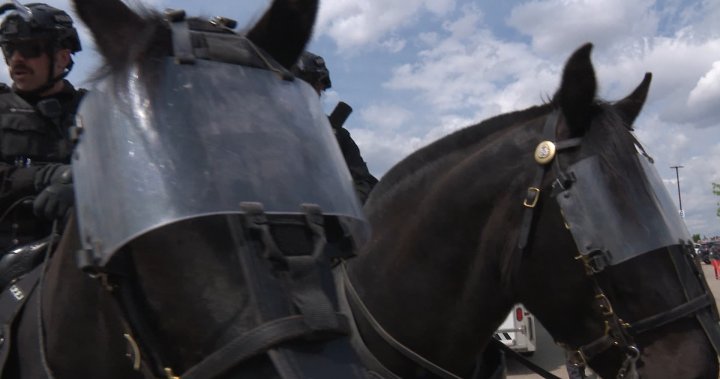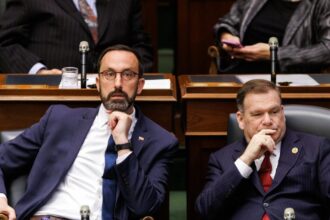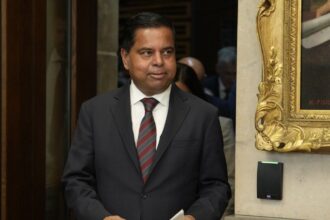The tranquil mountain landscapes of Kananaskis Country transformed into a stage for political expression this weekend as hundreds of demonstrators gathered near the heavily secured G7 Summit. Unlike the chaotic scenes that have defined past international summits, Alberta’s protests maintained a notably peaceful atmosphere, with former U.S. President Donald Trump emerging as the primary focus of demonstrators’ concerns.
Against the backdrop of the Canadian Rockies, protesters assembled at designated areas in Calgary and Kananaskis on Saturday, voicing opposition to various policies embraced by G7 leaders. Climate action, economic inequality, and militarization topped the agenda of concerns, but it was Trump’s controversial presence that galvanized the most vocal responses.
“We’re here to send a clear message that Trump’s policies on climate, immigration, and international cooperation are dangerous for the world,” said Melissa Chen, an environmental activist who traveled from Vancouver to participate. “The G7 represents an opportunity to push back against his rhetoric and stand for progressive values.”
Security measures for the summit have been described by officials as “unprecedented,” with the RCMP implementing a comprehensive strategy that includes restricted zones, checkpoints, and significant police presence throughout the region. The Kananaskis Country area has been effectively sealed off, with only accredited individuals permitted within the security perimeter.
Despite the formidable security apparatus, authorities have worked to accommodate peaceful protest. Calgary Police Service spokesperson Cst. James Harrington told CO24, “We’ve designated specific areas for demonstrations that balance security requirements with the democratic right to protest. Our goal is to ensure everyone’s safety while respecting freedom of expression.”
The demonstrations contrast sharply with previous G7 and G20 summits, which have sometimes devolved into violent confrontations. The 2001 G8 Summit in Genoa, Italy saw one protester killed and hundreds injured, while the 2010 G20 in Toronto resulted in over 1,000 arrests amid widespread property damage.
Economic implications of the summit have been substantial for the local economy. Calgary hotels report near-capacity bookings, with restaurants and service providers experiencing significant upticks in business. However, some local businesses within security zones have faced operational challenges due to access restrictions.
Indigenous groups have maintained a notable presence at the demonstrations, highlighting concerns about sovereignty and environmental protection. “We’re here to remind world leaders that these discussions are happening on unceded Indigenous territories,” said Sarah Whitehorse of the Treaty 7 Indigenous Coalition. “Any decisions about resource development must respect Indigenous rights and environmental sustainability.”
The carefully orchestrated security approach appears to be succeeding where previous summits have failed. By Sunday afternoon, authorities reported no arrests or significant incidents related to the demonstrations. This outcome reflects both the effectiveness of security planning and the predominantly peaceful intentions of protesters.
Political analysts suggest the demonstrations’ focus on Trump reflects broader anxieties about a potential second Trump presidency and its implications for global politics. Dr. Margaret Wilson, Professor of International Relations at the University of Calgary, explained, “The protesters are articulating concerns that extend beyond this summit. They’re responding to the rightward shift in global politics that Trump represents.”
As the G7 Summit continues through Monday, security forces remain vigilant while demonstrators prepare for a final day of action. The peaceful nature of protests thus far represents a victory for both authorities and activists, demonstrating that meaningful political expression need not descend into confrontation.
What remains to be seen is whether the substantive concerns raised by protesters will influence the policy discussions happening behind the summit’s secure perimeter, or if the gap between public demands and elite decision-making will continue to define international governance in an increasingly polarized world.










